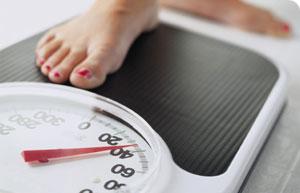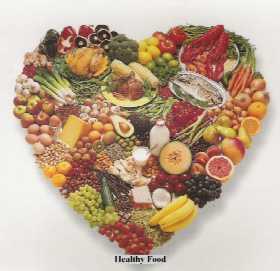Diet Pro is software that I have purchased and use on my computer. I’ve been using it or its downscaled version, Living Cookbook, for some time now. It was a great tool when I was doing Weight Watchers since it could calculate the points of just about any recipe. I have quite a collection of recipes in it that I have gathered over the years. It’s more secure than a web site since you never know when a web site might decide not to be there anymore. Plus, there’s no monthly fee to pay like on some web sites. You can find out more about DietPro here: http://www.dietpro.net/
UncategorizedCategory Archives
Diet tools
 WeightControl.xls: This is the spreadsheet I use to track my weight. There’s a chart included that graphs out the progress. The dates don’t show properly on the chart, but I haven’t been able to figure out how to fix that. It does a nice job as it is. Somewhere along the way, I picked up a little fact saying that 1% of body weight was the ideal weight reduction for a week. That may not work out well for someone who has a LOT of weight to shed, but it seems right for someone who is moderately overweight. The spreadsheet uses that fact.
WeightControl.xls: This is the spreadsheet I use to track my weight. There’s a chart included that graphs out the progress. The dates don’t show properly on the chart, but I haven’t been able to figure out how to fix that. It does a nice job as it is. Somewhere along the way, I picked up a little fact saying that 1% of body weight was the ideal weight reduction for a week. That may not work out well for someone who has a LOT of weight to shed, but it seems right for someone who is moderately overweight. The spreadsheet uses that fact.
WeightWatchersPoints.xls: This spreadsheet can be used to keep track of points for a day. There’s also a page to calculate the points for a food based on information from the Nutrition Facts. There’s a multiplier for adjusting the portion size of that food in case one wants to eat a portion smaller or larger than that used in the Nutrition Facts.
Measurements.doc: I set up a little chart of measurements to be printed on a 6″x4″ index card. I thought this would be a good idea because I could have my workout partner at the gym help me take the measurements. The card is far more portable than a computer!
Living Cookbook: This is software for planning menus and printing grocery lists. Nutrition Facts for recipes can be calculated from an extensive database of ingredient information. Weight Watcher points can also be calculated. (Because Weight Watchers has a patent on the equation, Living Cookbook doesn’t set this up for you. You have to enter some parameters into the setup, but they tell you what parameters to use.) The program comes with a fairly good set of recipes built in, and it’s easy to add recipes found on the Internet by capturing them. I’ve got quite a collection built up now. I hardly ever open a cookbook anymore.
WWCalc Info: If you’re following the Weight Watchers program and you have a PDA running Palm OS, you’re going to want this! The link is to a Yahoo group where you can download WWCalc and find links to where databases of restaurant foods and the like to use with it. Real cool.
NutritionData’s Nutrition Facts Calorie Counter and DietFacts.com: These sites have Nutrition Facts for a wide variety of foods.
How to feed the stomach
The following is from The Weigh Down Diet by Gwen Shamblin.
- Wait anywhere from one to thirty-six hours on your first hunger, and then it will be approximately one to three times a day. Do not fear–you will love the energy you feel from this and the delight from being able to wait.
- Hunger is a polite burning sensation, the feeling of a knot inside your stomach. If you have to bypass hunger due to work or social conflicts, the sensation will come back around in forty-five minutes. While it is normal to skip hunger once in a while, do not make it a habit. If you haven’t felt hunger within thirty-six hours, eat a small meal and wait for hunger again. You should feel it soon. After your first attempt, do not keep waiting thirty-six hours. Continue to decrease your food daily until you feel stomach hunger. Do not be legalistic. We are working on reducing food intakes to normal amounts for your body.
- Family meal time. If you are hungry before dinner, just bypass hunger. If you are full at normal mealtime because of an irregular eating schedule or because you tasted all your cooking–several times–then just drink a glass of non-caloric tea and talk to the family.
- Drink non-caloric beverages to help the sugar levels drop normally so that you can get the hunger signal. Continual intake of sugar through drinks prevents you from sensing hunger.
- Sip your drink between bites. Stop eating when you are satisfied.
- Rate foods. Decide which foods you like best and eat those first, saving the least favorite until the end. Generally, leave desserts until last.
- Wrap up leftovers. You can have them the next time you are hungry.
- Use carryouts when eating out. Restaurants serve such large portions. Some foods, especially pastas, taste better the next day. Some just turn green in the fridge, and then you can easily throw them away!
- Do not serve yourself a five-course meal just because a medication must be taken with food. Food needed with pills can be small amounts like one to three crackers. You do not need a banquet unless the physician orders that.
- In the Weigh Down Workshop, expect your food consumption to decrease 1/2 to 2/3 of what you were eating as an overeater. As you progress, you may expect your desire eating, or desire for food, to decrease over time.
Spiritual weight control
 “DROP 100 LBS WITHOUT DIETING: Arizona State researchers I.D. the mental habit that transforms body chemistry to melt fat super-fast!” So proclaims the cover of the latest issue of one of my favorite magazines, First For Women. I took a look at the article and found that the “mental habit” mentioned is prayer. The article refers the reader to a couple of web sites: First Place and Weigh Down. These are both organizations for weight loss based on Christian principles. While I am not specifically Christian, I figured it could be worthwhile to dig a little deeper and find out more about their approach. I checked with my local library system and found that they had a book by the founder of Weigh Down: The Weigh Down Diet by Gwen Shamblin. The beginning pages of the book speak of how we are born with two empty places in our bodies: our stomachs and our hearts. Problems arise when we try to satiate heart hunger with food. Love is for the heart, and food is for the stomach. And so begins that reading journey.
“DROP 100 LBS WITHOUT DIETING: Arizona State researchers I.D. the mental habit that transforms body chemistry to melt fat super-fast!” So proclaims the cover of the latest issue of one of my favorite magazines, First For Women. I took a look at the article and found that the “mental habit” mentioned is prayer. The article refers the reader to a couple of web sites: First Place and Weigh Down. These are both organizations for weight loss based on Christian principles. While I am not specifically Christian, I figured it could be worthwhile to dig a little deeper and find out more about their approach. I checked with my local library system and found that they had a book by the founder of Weigh Down: The Weigh Down Diet by Gwen Shamblin. The beginning pages of the book speak of how we are born with two empty places in our bodies: our stomachs and our hearts. Problems arise when we try to satiate heart hunger with food. Love is for the heart, and food is for the stomach. And so begins that reading journey.
As I looked through resources relating to spirituality and weight loss, I was reminded of The Joy of Weight Loss on the Beliefnet site. When I looked for other items about weight loss on Beliefnet, I came across an article about mindful eating. How often do we grab something on the run and eat it unconsciously without really paying attention to what we are doing much less where the food came from or how it got to us? Another article on Beliefnet, Getting Fit for God, has some good ideas to work with as well.
I would like to glean good concepts from these readings about spiritual weight loss and put them together in a more generalized form. It isn’t to secularize them but to separate them from specific religious references. I like the idea of calling on Higher Power to assist with goals and will definitely incorporate that into what I do.